#including type 2 diabetes
Explore tagged Tumblr posts
Text
9 Different Types of Magnesium and Their Benefits
#Why magnesium is important#All the cells in the human body need magnesium to function. An essential mineral#magnesium is a cofactor – a helper molecule – in hundreds of biochemical reactions. It performs many key roles#such as in energy production#supporting muscle and nerve function#and helping regulate blood sugar and blood pressure#to name just a few. Low magnesium levels are linked to a number of health issues#including type 2 diabetes#heart disease#mood disorders#and migraines.
3 notes
·
View notes
Text
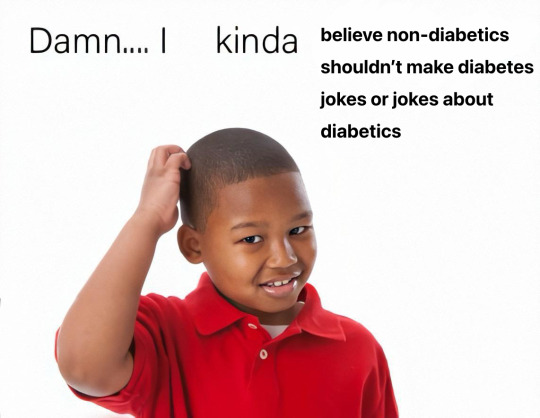
hot opinions straight off the stove! 🥘🔥
#mostly referring to jokes against t1ds but t2ds can be included as well#type 1 diabetes#type 2 diabetes#type 1 diabetic#type 2 diabetic#type 1 problems#t1d#t1diabetes#t1diabetic#t1d problems#t2d#diabetes#opinions#opinion#hot take#emily rambles#not art#meme#idk i guess its a meme#lol
852 notes
·
View notes
Text
A new treatment combining ReCET and semaglutide could eliminate the need for insulin in type 2 diabetes, with 86% of participants in a study no longer requiring insulin therapy. The treatment was safe and well-tolerated, and further trials are planned to confirm these results.
Groundbreaking research presented at UEG Week 2024 introduces a promising new treatment approach for type 2 diabetes (T2D) that has the potential to greatly reduce or even eliminate the need for insulin therapy.
This innovative approach, which combines a novel procedure known as ReCET (Re-Cellularization via Electroporation Therapy) with semaglutide, resulted in the elimination of insulin therapy for 86% of patients.
Globally, T2D affects 422 million people... While insulin therapy is commonly used to manage blood sugar levels in T2D patients, it can result in side effects... and further complicate diabetes management. [Note: Also very importantly it's fucking bankrupting people who need it!!] A need therefore exists for alternative treatment strategies.
Study Design and Outcomes
The first-in-human study included 14 participants aged 28 to 75 years, with body mass indices ranging from 24 to 40 kg/m². Each participant underwent the ReCET procedure under deep sedation, a treatment intended to improve the body’s sensitivity to its own insulin. Following the procedure, participants adhered to a two-week isocaloric liquid diet, after which semaglutide was gradually titrated up to 1mg/week.
Remarkably, at the 6- and 12-month follow-up, 86% of participants (12 out of 14) no longer required insulin therapy, and this success continued through the 24-month follow-up. In these cases, all patients maintained glycaemic control, with HbA1c levels remaining below 7.5%.
Tolerability and Safety
The maximum dose of semaglutide was well-tolerated by 93% of participants, one individual could not increase to the maximum dose due to nausea. All patients successfully completed the ReCET procedure, and no serious adverse effects were reported.
Dr Celine Busch, lead author of the study, commented, “These findings are very encouraging, suggesting that ReCET is a safe and feasible procedure that, when combined with semaglutide, can effectively eliminate the need for insulin therapy.”
“Unlike drug therapy, which requires daily medication adherence, ReCET is compliance-free [meaning: you don't have to take it every day], addressing the critical issue of ongoing patient adherence in the management of T2D. In addition, the treatment is disease-modifying: it improves the patient’s sensitivity to their own (endogenous) insulin, tackling the root cause of the disease, as opposed to currently available drug therapies, that are at best disease-controlling.”
Looking ahead, the researchers plan to conduct larger randomized controlled trials to further validate these findings. Dr. Busch added, “We are currently conducting the EMINENT-2 trial with the same inclusion and exclusion criteria and administration of semaglutide, but with either a sham procedure or ReCET. This study will also include mechanistic assessments to evaluate the underlying mechanism of ReCET.”
-via SciTechDaily, October 17, 2024
--
Note: If it works even half as well as suggested, this could free so many people from the burden of the ongoing ridiculous cost of insulin. Pharma companies that make insulin can go choke (hopefully).
#would be super interested to hear from people with expertise in the area about how this sounds#obviously it's a small sample size#but they're going to do more trials#and LOOK at that effectiveness rate#insulin#diabetes#healthcare#medicine#diabetic#type 2 diabetes#public health#medical news#good news#hope
3K notes
·
View notes
Text
vetted fundraisers from my inbox
happy new year! palestinians are still in dire straits due to rising cost of living and recent inability to evacuate as the IOF continues to devastate the state of palestine. if you are able please donate to any of the fundraisers below, or reblog the post so it may reach those who can spare the funds.
(please check original post for latest updates. fundraiser amounts are current as of jan 9 2025, 2:00 pm pst)
Aya's fundraiser - €11,630/€15,000 (78%) [#100 on GazaVetters's list] Aya is raising funds to support herself and her 3 children, as well as 15 extended family members. ▶ Last donation: €5 - 2 days ago
Mosab's fundraiser - €13,934/€20,000 (70%) [#309 on GazaVetters's list] This fundraiser sponsored by Mosab's friend is to benefit him and Mosab's wife and child. ▶ Last donation: €10 - 49 min ago
Nareman's fundraiser - €1,496/€40,000 (4%) [Vetted by 90-ghost] Nareman is raising funds to support himself and his wife and children. ▶ Last donation: €25 - 2 days ago
Muhammad's fundraiser - €24,216/€82,000 (30%) [Vetted by 90-ghost] [Vetted by bilal-salah0] Portuguese artist Haruka Aoki is sponsoring this fundraiser for 17yo Muhammad and his 11 family members. ▶ Last donation: €5 - 17 hrs ago
Youssef's fundraiser - €46,916/€50,000 (94%) [Vetted by 90-ghost] Youssef is raising funds in order to afford treatment for his son's severe respiratory condition, in addition to supporting his 3-person household. ▶ Last donation: €15 - 1 hr ago
Moamen's fundraiser - €2,281/€30,000 (8%) [#322 on GazaVetters's list] Moamen is raising funds to support himself, his wife, and their three children. ▶ Last donation: €10 - 1 day ago
Nour's fundraiser - €8,069/€50,000 (16%) [#291 on GazaVetters's list] Nour is raising funds to support herself, her husband, and their two children. ▶ Last donation: €10 - 50 min ago
Rafah's fundraiser - £1,355/£100,000 (1%) [Vetted by bilal-salah0] This fundraiser is sponsored by a friend of Rafah to support her and her five children. ▶ Last donation: £5 - 3 days ago
Walaa's fundraiser - $14,101/$50,000 CAD (28%) [Vetted by 90-ghost (see linked post for further info)] This fundraiser supports a family that includes a child who has Type I diabetes. ▶ Last donation: $10 CAD - 3 days ago
Ahmed AlSaidi's fundraiser - £3,607/£30,000 (12%) [Vetted by 90-ghost] [Vetted by bilal-salah0] Ahmed is raising funds for himself, his wife, their 3 children, as well as his parents, his brothers, and his brothers' families. ▶ Last donation: £5 - 1 day ago
Majed's fundraiser - $11,355/$50,000 USD (16%) [Vetted by bilal-salah0] Majed is raising funds to support herself and her family. ▶ Last donation: $10 USD - 11 hrs ago
Mariam's fundraiser - $2,016/$30,000 CAD (7%) [#292 on GazaVetters's list] This fundraiser supports Mariam, her older brother, and their two parents. ▶ Last donation: $5 CAD - 15 hrs ago
Mohammed's fundraiser - £1,764/£50,000 (4%) [Vetted by 90-ghost] Mohammed is raising funds to support himself, his wife, and their three children. ▶ Last donation: £10 - 12 hrs ago
🆕 Kawthar's fundraiser - €9,443/€50,000 (19%) [#145 on GazaVetters's list] Kawthar is raising funds to support herself and her family, including her mother who suffers from kidney failure. ▶ Last donation: €10 - 2 hrs ago
840 notes
·
View notes
Text
The Best News of Last Month - July 2024
🏅- Talk about an Olympic comeback!
1. U.S. proposes ban on airline fees for seating parents next to kids

Parents should't have to pay a fee to sit next to their children when flying, according to the White House, which is moving to ban airlines from charging families extra to be seated together.
Under a rule proposed Thursday by the Department of Transportation, airlines would be required to seat parents and kids 13 and younger together free of charge when adjacent seating is available at booking.
2. A spinal injury killed Adriana Ruano's dream as a gymnast. She just won Guatemala's first Olympic gold medal as a shooter.

Ruano was training for the 2011 world championships in gymnastics, a qualifier for the London Olympics the following year, when she felt pain in her back. An MRI showed the then-16-year-old had six damaged vertebrae — a career-ending injury.
But on Wednesday, she came back as a shooter and won Guatemala's first Olympic gold medal.
3. Woman swept out to sea rescued after surviving 37 hours in 6.5' waves, drifted over 50 miles.

A Chinese woman who was swept out to sea while swimming at a Japanese beach was rescued 37 hours later after drifting in an inflatable swim ring more than 80 kilometers (50 miles) in the Pacific Ocean, officials said Thursday.
4. Afghan Sisters Escape The Taliban To Achieve Olympic Dreams

Sisters Yulduz and Fariba Hashimi are set to become the first female cyclists from Afghanistan to compete in the Olympics. The siblings fled their country after the Taliban seized power in 2021 and cracked down on women's rights, including banning women from participating in sports.
5. Stem cell therapy cures man with type 2 diabetes

A 59-year-old man had been suffering from diabetes for 25 years, needing more and more insulin every day to avoid slipping into a diabetic coma and was at risk of death. But then Chinese researchers cured his disease for the first time in the world. The patient received a cell transplant in 2021 and has not taken any medication since 2022.
6. Seventh person likely 'cured' of HIV, doctors announce

A 60-year-old German man is likely the seventh person to be effectively cured from HIV after receiving a stem cell transplant, doctors announced on Thursday. The man received a bone marrow transplant for his leukaemia in 2015. The procedure, which has a 10 percent risk of death, essentially replaces a person's immune system.
7. Every country has now banned the use of leaded gasoline in cars

Three and a half decades later, in 2021, Algeria became the last country to ban it. Leaded gasoline is now banned from being used in road vehicles in every country. It is a big win for the health of people around the world.
----------
That's it for this month :)
This newsletter will always be free. If you liked this post you can support me with a small kofi donation here:
Buy me a coffee ❤️
Also don’t forget to share this post with your friends.
1K notes
·
View notes
Text
Disabilities that You Should Consider Representing in Your Writing More… part 1
[large text: Disabilities that You Should Consider Representing in Your Writing More… part 1]
While all disabilities are underrepresented in basically all sorts of media, it’s hard to not notice the trend in what disabilities make up the majority of representation. It’s especially visible when having a blog like this, where we can see what disabilities writers even consider including in their writing, and which ones never come up.
One in four people are disabled. With eight billion people alive it means there’s a lot of disabled people, and a lot of reasons why they are disabled in the first place - but this diversity is rarely represented, even on this blog, and anyone who has been following for a while has probably noticed that fact.
To be blunt: there are disabilities other than “amputee” and “invisibly disabled mobility aid user”. Does that mean that it’s wrong to write either of those? No, and we don’t want to imply that it is. Does it mean that either of these have a lot of good representation? Absolutely not, half of all the amputee characters out there are written by people who don't seem to be even aware they're writing a disabled character. Does it mean that when you are deciding on what to give your character, you should think beyond (or along! people can be, and often are, multiply disabled!) just those two? Absolutely. Disability is a spectrum with thousands of things in it.
This is, simply, a list of common disabilities. This is just a few of them, as this is part one of presumably many (or, at least three as of right now). By “common” we rather arbitrarily decided on “~1% or more” - so at least 1 in 100 people has the disabilities below, which is a lot. Featuring!: links that you should click, sources of the % that are mostly just medical reports and might be hard to read, and quick, very non-exhaustive explanations to give you a basic idea of what these are.
Intellectual disability (about 1.5%) Intellectual disability is a condition we have written about at length before. It’s a developmental disability that affects things such as conceptualization, language, problem-solving, or social and self-care skills. ID can exist on its own or be a part of another condition, like Down Syndrome, Congenital Iodine Deficiency, or Fetal Alcohol Spectrum Disorders. This post covers a lot of basic information that you might need. We have an intellectual disability tag that you can look through!
Cancer survivors (5.4% in the US, about 0.55% worldwide) A cancer survivor is a pretty self-explanatory term. There is a lot of types of cancer and some of them are very common while others are very rare, which makes this a very diverse category. Cancers also have different survival rates. While not every survivor will have disabling symptoms, they definitely happen. Most of the long-term side effects are related to chemotherapy, radiation, and other medication, especially if they happened in children. They can include all sorts of organ damage, osteoporosis, cognitive problems, sensory disabilities, infertility, and increased rate of other cancers. Other effects include removal of the affected area, such as an eye, a spleen, breasts, or the thyroid gland, each of which will have different outcomes. Cancer, and cancer treatments, can also result in PTSD.
Diabetes (about 8.5%, ~95% of that are type 2) Diabetes is a group of endocrine conditions that cause hyperglycemia (high blood sugar) for various reasons depending on the type. The vast majority of people have type 2 diabetes, which can cause fatigue, poor healing, or feeling thirsty or hungry. A diabetic person will use insulin when needed to help manage their blood sugar levels. There are many complications related to diabetes, from neuropathy, to retinopathy, and chronic kidney disease, and there's a lot of disabilities that coexist with diabetes in general! You might want to check out the #how to write type 1 diabetes tag by @type1diabetesinfandom!
Disabling vision loss (about 7.5%) Blindness and low vision are a spectrum, ranging from total blindness (around 10% of legally blind people) to mild visual impairment. Blindness can be caused by countless things, but cataracts, refractive errors, and glaucoma are the most common. While cataracts cause the person to have a clouded pupil (not the whole eye!) blind eyes usually look average, with strabismus or nystagmus being exceptions to that fairly often (but not always). Trauma isn't a common cause of blindness, and accidents are overrepresented in fiction. A blind person can use a white cane, a guide dog or horse, or both. Assistive solutions are important here, such as Braille, screenreaders, or magnifying glasses. We have a blindness tag that you can look through, and you might want to check out @blindbeta and @mimzy-writing-online.
Psoriasis (about 2-4%) Psoriasis is a chronic skin condition with multiple subtypes; it can cause intense itching, pain, and general discomfort, and often carries social stigma. It’s an autoimmune and non-contagious disability that affects the skin cells, resulting in raised patches of flaky skin covered with scales. It often (30%) leads to a related condition, psoriatic arthritis, which causes joint pain, tenderness, and fatigue, among other things.
Stroke survivors (0.5-1%) A stroke survivor is a person who has survived any kind of stroke (ischemic, hemorrhagic, etc.). While the specific symptoms often depend on the exact location on where the stroke happened, signs such as hemiplegia, slurred speech, vision problems, and cognitive changes are common in most survivors to some degree. When someone has a stroke as a baby, or before they are born, it can result in cerebral palsy, epilepsy, and other disabilities. We have a brain injury tag that you can look through!
Noonan Syndrome (about 0.1-1% - mild is 1%, severe 0.1%) Noonan Syndrome is a disability that is almost never mentioned in any context, but certainly not around the topic of writing disabled characters. It’s a congenital condition that can cause cardiomyopathy, chronic joint pain, hypermobility, short stature, facial differences such as ptosis, autism, and various lymphatic problems among other things. Some people with Noonan Syndrome might use mobility aids to help with their joint pain.
Hyperthyroidism (about 1.2%) Hyperthyroidism is a condition of the endocrine system caused by hormone overproduction that affects metabolism. It often results in irritability, weight loss, heat intolerance, tremors, mood swings, or insomnia. Undertreated hyperthyroidism has a rare, but extremely dangerous side effect associated with it called a thyroid storm, which can be fatal if untreated.
Hypothyroidism (>5%) Hypothyroidism is an endocrine condition just as hyperthyroidism is, and it causes somewhat opposite symptoms. Due to not producing enough thyroid hormones, it often causes fatigue, depression, hair loss, weight gain, and a frequent feeling of being cold. It’s often comorbid with other autoimmune disabilities, e.g. vitiligo, chronic autoimmune gastritis, and rheumatoid arthritis. Extreme hypothyroidism can also be potentially fatal because of a condition known as Myxedema coma (or “crisis”), which is also rare.
Deafblindness (about 0.2-2%) Being DeafBlind is often considered to be an extremely rare disability, but that’s not really the case. DeafBlindness on its own isn’t a diagnosis - it can be caused by a wide range of things, with CHARGE syndrome (congenital), Usher syndrome (born deaf, becomes blind later in life), congenital rubella, and age-related deafness and blindness being some of the most common reasons. DeafBlindness is a wide spectrum, the vast majority of DeafBlind people aren’t fully blind and deaf, and they can use various ways of communication. Some of these could be sign language (tactile or not), protactile, the deafblind manual, oral speech (aided by hearing aids or not), the Lorm alphabet, and more. You can learn more about assistive devices here! Despite what various media like to tell you, being DeafBlind isn’t a death sentence, and the DeafBlind community and culture are alive and thriving - especially since the start of the protactile movement. We have a DeafBlindness tag that you can look through!
It’s probably worth mentioning that we have received little to no asks in general for almost all the disabilities above, and it’s certainly not due to what mods answer for. Our best guess is that writers don’t realize how many options they have and just end up going for the same things over and over.
Only representing “cool” disabilities that are “not too much while having a particular look/aura/drama associated” isn’t what you should aim for. Disabled people just exist, and all of us deserve to be represented, including those whose disabilities aren’t your typical “cool design” or “character inspo”, and literally all of us deserve to have good, informed representation. Sometimes we are just regular people, with disabilities that are “boring” or “too much”, and don’t make for useful plot points.
mod Sasza (with huge thank you to mod Sparrow, Rot, and Virus for their contributions with research)
#mod sasza#disabled character ideas#writing guide#writing resources#writing help#writing advice#writeblr
2K notes
·
View notes
Note
Hello this a long shot call, am a citizen of Palestine. I am here to request for your support to help get my insulin (Humalog), just an injection for today to save my life please I beg.I was diagnosized with type 1 diabetes and due to current situation in Gaza I'm unable to get my insulin injection as a result I'm here begging for little financial support to help me purchase insulin for this week. Am sorry if am sending you again this request, kindly donate any amount please. My donation link is in my pinned post🇵🇸
Everyone, keep your eyes peeled. This user is a known scammer. If you get any asks with this copy/pasted message, or from an account using this profile picture, it’s not real.
This person’s main donation post has “verified/vetted” in big red letters at the top. It is a lie. That’s why they don’t tag the person who supposedly verified them or provide a link. Even if a user claims to be verified, it’s important to double check. Cross reference el-shab-hussein and nabulsi’s spreadsheet and the Operation Olive Branch spreadsheet, and search the url/keywords from the fundraiser title in tumblr’s search bar. I have links to both spreadsheets, as well as gazafunds.com, in my pinned post. When answering an ask like this for a user that’s actually legit, linking to the verification will make it a lot easier for people to donate and share without hesitation.
I recognized this person immediately because el-shab-hussein has posted about this scam several times. I don’t have a link handy to any of Hussein’s posts about them, but people have been very kindly linking to these two users/posts so that when you search this url, you find proof of the scam.
An unverified fundraiser doesn’t always mean that it’s not legit, and I’ve been contacted by a lot of people who may not have been vetted at the time, but later on someone did verify them. It’s not necessarily a good idea to block unverified users right off the bat. I keep a list of users to search periodically for verification (or confirmation of a scam, if that is the case). But this person is a very well known scammer. If they contact you, just keep on sharing the proof of the scam and tell your followers to beware.
369 notes
·
View notes
Text
No one should be fooled into thinking that COVID-19 no longer matters. Research efforts on COVD-19’s delayed health effects continue. Its expanding list now includes a higher risk of type 2 diabetes, lower cognition, higher rates of anxiety and depression, and a two to three-fold increased risk of heart attack and stroke.
These delayed health risks resulted in an estimated 90,500 excess deaths in 2023. That’s over 11 times what the Public Health Agency of Canada had reported over the same period and more than 45 times the deaths from motor vehicle accidents in Canada during the same year.
Such profound harms should have galvanized Ontario into ramping up testing, prevention and transmission of SARS CoV-2. Instead, the opposite happened: Rather than educate the public on its delayed health consequences, Ontario continued to fixate on only its immediate hospitalizations and deaths.
source
#covid#ontario#2024#wear a mask#covid is a neurovascular disease with long-term effects -- it's not just a cold
262 notes
·
View notes
Text
If your activism for diabetics stops as soon as you have to include type 2 diabetics, then not only is your "activism" ableist and almost certainly fatphobic, your efforts are also useless. You will never improve how society treats diabetic people if you only care about the diabetic people who are viewed more favorably in this fatphobic, ableist, and dieting-obsessed world.
-Mod Worthy
#fatphobia#t2d#type 2 diabetes#t1d#ableism#diet culture#diabetes#type 1 diabetes#healthism#Mod Worthy
1K notes
·
View notes
Text
9 Different Types of Magnesium and Their Benefits
#Why magnesium is important#All the cells in the human body need magnesium to function. An essential mineral#magnesium is a cofactor – a helper molecule – in hundreds of biochemical reactions. It performs many key roles#such as in energy production#supporting muscle and nerve function#and helping regulate blood sugar and blood pressure#to name just a few. Low magnesium levels are linked to a number of health issues#including type 2 diabetes#heart disease#mood disorders#and migraines.
0 notes
Text
Good News - July 8-14
Like these weekly compilations? Tip me at $Kaybarr1735! And if you tip me and give me a way to contact you, at the end of the month I'll send you a link to all of the articles I found but didn't use each week!
1. Zoo welcomes birth of four endangered horse foals

“[The Marwell Zoo in GB] said it was "delighted" to welcome the arrivals to the endangered Przewalski’s horse herd. All four are female and said to be "doing well" after two were born in May and two in June. […] “These horses, that were previously listed extinct in the wild, are an example of how zoo breeding programmes can help restore threatened species around the world.” […] All the Przewalski’s horses alive today are descended from just 12 individuals. Current estimates suggest there are 178 mature individuals living in the wild.”
2. Restoring woodlands and planting trees for sustainability success

“In 2023, [the Marwell Zoo] planted 9,000 new trees […] both within the zoo and on our surrounding land. […] Marwell tries to encourage natural feeding behaviour and nutrition by including leafy material [in animals’ feed] as much as possible. […] Planting more trees and enhancing management of our existing woodlands, prepares the way to further self-sufficiency in browse production in the future. Plus, it creates new habitats for wildlife in our woodland areas.”
3. Inclusive Playgrounds Allow Children Of All Abilities To Play

“With ramps allowing children in wheelchairs to ascend the central play structure, as well as numerous other swings and apparatus usable for children of all abilities, the 16,000-square-foot P.K.’s Place is St. Paul’s first fully inclusive playground. […] To be universally accessible, a play area must have at least 70% of its play features fully accessible, far more than required by the Americans with Disabilities Act (ADA). […] Play areas should allow parents and grandparents with disabilities to participate as well.”
4. Combination treatment can increase human insulin-producing cells in vivo
“[Diabetes-model mice] were treated with the combination therapy [of a plant product called harmine and “a widely used class of type 2 diabetes therapy”] and their diabetes was rapidly reversed. Strikingly, human beta cell numbers increased by 700 percent over three months with this drug combination. "This is the first time scientists have developed a drug treatment that is proven to increase adult human beta cell numbers in vivo. This research brings hope for the use of future regenerative therapies to potentially treat the hundreds of millions of people with diabetes," said Dr. Garcia-Ocaña, the paper's corresponding author.”
5. Decades of Dedication: Australia’s Largest Ongoing Urban Restoration Project

“[Friends of Lake Claremont] has transformed the area into a thriving ecosystem, re-establishing native habitats and fostering biodiversity. This year, 800 native seedlings (100 trees, 350 shrubs and 350 ground covers) have been planted on the northwestern buffer of Lake Claremont. Volunteers replaced a large Port Jackson fig (Ficus rubiginosa) affected by [beetle] infestation with native plants to enhance the local wildlife habitat, thereby benefiting insects, frogs, birds and brown bandicoots. […] Overall, the project contributes to the area’s function as a regional ecological corridor, linking inland bushlands, the Swan River and the Indian Ocean.”
6. Important habitat for fish in Heart of the Fraser now conserved

“British Columbia’s iconic salmon now have more protected spawning habitat in the lower Fraser River, thanks to the Nature Conservancy of Canada’s (NCC’s) conservation acquisition of Carey Island. […] Carey Island and its gravel channels offer calm and crucial spawning and rearing habitat for the river’s fish and aquatic species. […] The Pelólxw Tribe […is also] actively working to restore the resilience of aquatic habitat within this stretch of the Lower Fraser. NCC is exploring opportunities to collaborate with the Pelólxw Tribe in support of their vision for stewardship of the area, which prioritizes both ecological and cultural values.”
7. Prime editing efficiently corrects cystic fibrosis mutation in human lung cells
“[R]esearchers have developed a gene-editing approach that efficiently corrects the most common mutation that causes cystic fibrosis, found in 85 percent of patients. With further development, it could pave the way for treatments that are administered only once and have fewer side effects. The new method precisely and durably corrects the mutation in human lung cells, restoring cell function to levels similar to that of Trikafta [the standard treatment since 2019].”
8. Montana’s High Court Considers a Constitutional Right to a Stable Climate
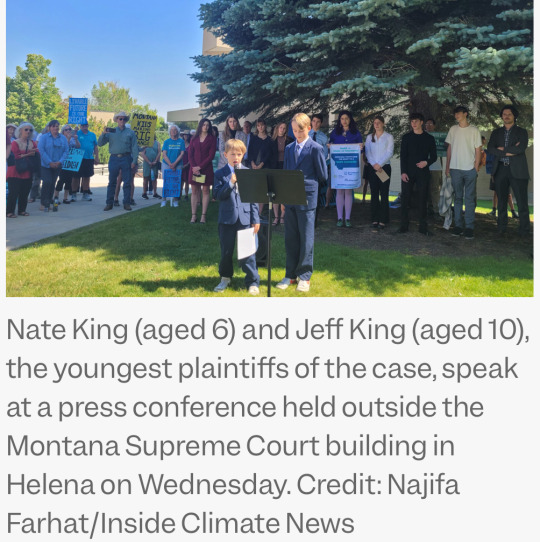
“At issue was the appeal of a decision last year, when a Montana judge blocked a state law that prohibited agencies from considering climate impacts when deciding whether to approve fossil fuel projects such as new power plants, pipelines or mining. The ruling, by District Judge Kathy Seeley, was prompted by a lawsuit filed by 16 youths who argued that the law violated Montana’s constitutional right to a “clean and healthful environment.” It was the first ruling in the United States to effectively establish constitutional rights to a stable climate[….]”
9. The US is about to get its first solar-covered canal

“The first canal-based solar project in the U.S. is nearing completion on tribal lands south of Phoenix, Arizona. […] The long, narrow solar array design would snake along the line of the canal and tap into the local electrical distribution grid every 1,000 feet, or every one megawatt. […] “Canal solar allows for greater power production per land size, cleaner water, less power transmission losses, and significant reduction in evaporation[….]” Covering the entire 8,000 miles of canals and waterways managed by the Bureau of Reclamation with solar panels could generate over 25 gigawatts of renewable energy and reduce water evaporation by tens of billions of gallons[….]”
10. Camera traps offer glimpse of first beaver born in Northumberland for 400 years

“"It’s such a relief that they have bred successfully and to see a new fluffy kit swimming with the family[….]” In just one year [since releasing the beavers], there has been a noticeable increase in resident trout, says the National Trust, along with more regular visits from kingfishers and grey herons. There are more insects at the site, too, thanks to the organic matter that builds up behind the dams, which in turn provides food for Daubenton’s bats. […] Beavers also play an important role in creating habitats that are more resilient to the effects of climate change[….]”
July 1-7 news here | (all credit for images and written material can be found at the source linked; I don’t claim credit for anything but curating.)
#hopepunk#good news#horse#zoo#nature#extinct species#sustainability#forest#children#disability#playground#disabled#wheelchair#diabetes#medicine#science#urban#biodiversity#ecosystem#fish#first nations#cystic fibrosis#gene editing#climate change#climate#youth#human rights#solar panels#solar energy#beaver
330 notes
·
View notes
Text
Also preserved in our archive
"No big deal." "Just a cold." "Back to normal."
The proportion of babies born with a congenital heart abnormality increased by 16 per cent after the first year of the pandemic, according to research at City St George's, University of London and published today in Ultrasound in Obstetrics and Gynecology.
Heart defects are the most common type of anomaly that develop before a baby is born, with around 13 babies diagnosed with a congenital heart condition every day in the UK and impacting one in 110 births globally . These include defects to the baby's heart valves, the major blood vessels in and around the heart, and the development of holes in the heart.
In over 18 million births, researchers analysed data from US birth certificates from the Centre of Disease Control and Prevention (CDC) between December 2016 and November 2022 to evaluate the effect of the pandemic on the number of babies born with a congenital heart defect.
They compared the number of babies born with a congenital heart condition every month before the Covid-19 pandemic (1st December 2016 to 30th November 2019) with those during the pandemic (1st December 2020 to 30th November 2022).
This data was then compared to the number of babies born with Down's Syndrome - a genetic condition not affected by the virus. This was to help ascertain if any differences observed might have been due to Covid-19, or if they were a result of other factors including limited access to antenatal services during the pandemic.
A total of 11,010,764 births before and 7,060,626 births during the pandemic were analysed. Data was adjusted to account for mother's BMI, diabetes and blood pressure before pregnancy, age, number of times they had given birth and the season in which prenatal care started.
The number of births with a congenital heart condition increased by 16% after the first year of the pandemic, with 65.4 cases per 100,000 live births compared to 56.5 per 100,000 births in the period studied before the pandemic.
The number of babies born with Down Syndrome did not change for the duration of the study, suggesting that the increase in fetal heart defects were not due to a disruption of health services.
Studying this large US dataset has revealed an unexpected picture for how the pandemic has affected the hearts of unborn babies, but we need to untangle the reasons for this link. We need to determine if the SARS-CoV-2 virus directly causes the development of fetal heart problems during pregnancy, and if so, how the virus makes these changes in the heart.
We don't have this type of data set available in the UK, but it's important to see if this pattern is seen in other parts of the world.
Covid-19 is still circulating and is easier to catch in the winter months. These results act as an important reminder for pregnant women to get their Covid-19 vaccinations to help protect themselves and their baby."
Professor Asma Khalil, lead author and Professor of Obstetrics and Maternal Fetal Medicine at City St George's, University of London
Source: City St George's, University of London
Journal reference: Khalil, A., et al. (2024). Congenital heart defects during COVID‐19 pandemic. Ultrasound in Obstetrics & Gynecology. doi.org/10.1002/uog.29126. obgyn.onlinelibrary.wiley.com/doi/epdf/10.1002/uog.29126
#mask up#public health#wear a mask#pandemic#wear a respirator#covid 19#covid#still coviding#coronavirus#sars cov 2
184 notes
·
View notes
Text
Things Biden and the Democrats did, this week #7
Feb 23-March 1 2024
The White House announced $1.7 Billion in new commitments from local governments, health care systems, charities, business and non-profits as part of the White House Challenge to End Hunger and Build Healthy Communities. The Challenge was launched with 8 billion dollars in 2022 with the goal of ending hunger in America by 2030. The Challenge also seeks to drastically reduce diet-related diseases (like type 2 diabetes). As part of the new commitments 16 city pledged to make plans to end hunger by 2030, the largest insurance company in North Carolina made nutrition coaching and a healthy food delivery program a standard benefit for members, and since the challenge launched the USDA's Summer EBT program has allowed 37 states to feed children over the summer, its expected 21 million low income kids will use the program this summer.
The US House passed a bill on Nuclear energy representing the first update in US nuclear energy policy in decades, it expands the Nuclear Regulatory Commission and reduces reducing licensing fees. Nuclear power represents America's single largest source of clean energy, with almost half of carbon-free electricity coming from it. This bill will boost the industry and make it easier to build new plants
Vice President Harris announced key changes to the Child Care & Development Block Grant (CCDBG) program. The CCDBG supports the families of a million American children every month to help afford child care. The new changes include capping the co-pay families pay to no more than 7% of their income. Studies show that high income families pay 6-8% of their income in childcare while low income families pay 31%. The cap will reduce or eliminate fees for 100,000 families saving them an average of over $200 a month. The changes also strength payments to childcare providers insuring prompt payment.
The House passed a bill making changes to the Small Business Administration’s 8(a) program. The 8(a) is an intensive 9 year program that offers wide ranging training and support to small business owners who are socially and economically disadvantaged, predominantly native owned businesses. Under the current structure once a business reaches over 6.8 million in assets they're kicked off the program, even though the SBA counts anything under $10 million as a small business, many companies try to limit growth to stay on the program. The House also passed a bill to create an Office of Native American Affairs at the SBA, in order to support Native-owned small businesses.
The White House and HUD announced steps to boost the housing supply and lower costs plans include making permanent the Federal Financing Bank Risk Sharing program, the program has created 12,000 affordable housing units since 2021 with $2 billion and plans 38,000 additional units over ten years. As well as support for HUD's HOME program which has spent $4.35 billion since 2021 to build affordable rental homes and make home ownership a reality for Americans. For the first time an administration is making funds available specifically for investments in manufactured housing, $225 million. 20 million Americans live in manufactured housing, the largest form of unsubsidized affordable housing in the country, particularly the rural poor and people in tribal communities.
The Department of Energy announced $336 million in investments in rural and remote communities to lower energy costs and improve reliability. The projects represent communities in 20 states and across 30 Native tribes. 21% of Navajo Nation homes and 35% of Hopi Indian Tribe homes remain unelectrified, one of the projects hopes to bring that number to 0. Another project supports replacing a hydroelectric dam in Alaska replacing all the Chignik Bay Tribal Council's diesel power with clear hydro power. The DoE also announced $18 million for Transformative Energy projects lead by tribal or local governments and $25 million for Tribal clean energy projects, this comes on top of $75 million in Tribal clean energy projects in 2023
Transportation Secretary Pete Buttigieg put forward new rules to ensure airline passengers who use wheelchairs can travel safely and with dignity. Under the planned rules mishandling a wheelchair would be a violation of the ACAA, airlines would be required to immediately notify the passenger of their rights. Airlines would be required to repair or replace the wheelchair at the preferred vendor of the passenger's choice as well as provide a loaner wheelchair that fits the passenger's needs/requirements
The EPA launched a $3 Billion dollar program to help ports become zero-emission. This investment in green tech and zero-emission will help important transportation hubs fight climate change and replace some of the largest concentrations of diesel powered heavy equipment in America.
the EPA announced $1 Billion dollars to help clean up toxic Superfund sites. This is the last of $3.5 billion the Biden administration has invested in cleaning up toxic waste sites known as Superfund sites. This investment will help finish clean up at 85 sites across the country as well as start clean up at 25 new sites. Many Superfund sites are contained and then left not cleaned for years even decades. Thanks to the Biden-Harris team's investment the EPA has been able to do more clean up of Superfund sites in the last 2 years than the 5 years before it. More than 25% of America's black and hispanic population live with-in 5 miles of a Superfund site.
Bonus: Sweden cleared the final major barrier to become NATO's 32nd member. The Swedish Foreign Minster is expected to fly to Washington to deposit the articles of accession at the US State Department. NATO membership for Sweden and its neighbor Finland (joined last year) has been a major foreign policy goal of President Biden in the face of Russian aggressive against Ukraine. Former President Trump has repeatedly attacked NATO and declared he wants to leave the 75 year old Alliance, even going so far as to tell Russia to "do whatever the hell they want" with European NATO allies
#Thanks Biden#Joe Biden#Politics#US politics#Democrats#Climate change#end hunger#hunger#proverty#disability#native Americans#tribal rights#clean energy#child care#housing#housing crisis
772 notes
·
View notes
Text
"Canada's parliament has passed a bill that that will cover the full cost of contraception and diabetes drugs for Canadians.
The Liberal government said it is the initial phase of a plan that would expand to become a publicly funded national pharmacare programme.
The government estimates one in five Canadians struggle to pay for prescription drugs.
The federal government still has to negotiate individual funding commitments with Canada's provinces and territories.
A report from parliament's budget watchdog estimates this bill will increase federal spending by C$1.9bn ($1.3bn; £1bn) over the next five years.
Canadians currently pay for prescription drugs through a mix of private, public and out-of-pocket plans.
The programme will cover 100% of the cost of diabetes and contraception medication for those who do not have drug plan coverage, and out-of-pocket costs for those who do.
The federal government estimates that nine million Canadian women of reproductive age will have access to common types of contraception under the plan.
Birth-control pills and IUDs can cost between C$100 and C$300 a year.
The Society of Obstetricians and Gynaecologists of Canada hailed the ball as a "historic achievement".
"Women across the country will be able to make choices about contraception based on what's best for their lives, not their wallets," it said.
In addition, some 3.7 million Canadians have been diagnosed with diabetes.
Diabetes drugs covered include insulin - for people with type 1 and type 2 diabetes, which can cost between C$900 and C$1,700 a year - and Metformin, which helps lower blood sugar levels for people with type 2 diabetes.
Speaking to reporters on Thursday from the Association of Southeast Asian Nations Summit, Prime Minister Justin Trudeau called the bill's passage "real progress" and urged provinces to quickly move forward with signing agreements.
The federal health minister has said he hopes that some provinces will have the plan in place by the end of this year, with all on board by next spring."
-via BBC, October 11, 2024
#canada#north america#justin trudeau#birth control#contraception#reproductive rights#diabetes#insulin#public health#healthcare access#healthcare
870 notes
·
View notes
Text
GUT HEALTH: How it Affects Your body 🍽️🤍✨
Having a healthy gut is important because it plays a central role in the overall functioning of your body. The state of a healthy or unhealthy gut affects all of these things:
Digestion and Nutrient Absorption: The gut's main role is to break down food and absorb important nutrients, including vitamins and minerals. When the gut is healthy, it digests food effectively and maximizes nutrient absorption. When it is not, it can result in digestive issues such as bloating, gas, and diarrhea, as well as nutrient deficiencies.
Immune System Support: About 70% of our immune cells are located in the gut. A balanced gut supports a strong immune response, helping the body fend off illnesses and reduce the risk of infections.
Emotions and Mood: The gut and brain are intricately connected through the gut-brain axis. The gut produces many neurotransmitters, including serotonin, which regulates your mood. An imbalanced gut can influence mental health, leading to issues like anxiety, depression, and even cognitive impairments.
Hormonal Balance: The gut plays a role in the production and modulation of certain hormones. This can impact various bodily functions, from stress responses to reproductive health.
Weight Management: The gut microbiome can influence metabolism, appetite, and fat storage. An imbalanced gut can lead to weight gain and metabolic disorders.
Protection Against Chronic Diseases: Poor gut health has been linked to a higher risk of chronic diseases, including type 2 diabetes, cardiovascular disease, and certain types of cancer.
Detoxification: The gut plays a role in eliminating waste products and toxins from the body.
Inflammation Regulation: A healthy gut can help regulate inflammation in the body. Chronic inflammation, often resulting from an imbalanced gut is a root cause of many diseases.
Skin Health: There's a connection between gut health and skin conditions. Issues like acne, eczema, and rosacea can be influenced by the state of the gut. An unhealthy gut can lead to inflammation, which may manifest as skin issues.
Barrier Function: The gut lining acts as a barrier, preventing harmful substances from entering the bloodstream. A compromised gut lining, often referred to as "leaky gut," can allow toxins and pathogens to enter the bloodstream leading to various health issues.
Production of Vital Compounds: Your gut produces essential compounds, like short-chain fatty acids, which has a lot of positive effects on health from reducing inflammation to supporting brain function.
Sleep Function: The gut produces neurotransmitters and hormones that regulate sleep, such as serotonin and melatonin. An unhealthy gut can disrupt sleep patterns.
#gut health#health and wellness#healthy living#mental health#healthy diet#health#wellness#healthy lifestyle#health tips#health is wealth#food#nutrition#level up journey#self help#self care#personal improvement#personal development#personal growth#skincaretips#skincare
764 notes
·
View notes
Text
The Best News of Last Week - March 18
1. FDA to Finally Outlaw Soda Ingredient Prohibited Around The World
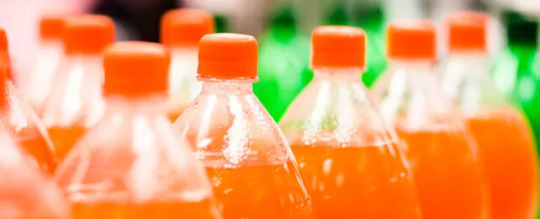
An ingredient once commonly used in citrus-flavored sodas to keep the tangy taste mixed thoroughly through the beverage could finally be banned for good across the US. BVO, or brominated vegetable oil, is already banned in many countries, including India, Japan, and nations of the European Union, and was outlawed in the state of California in October 2022.
2. AI makes breakthrough discovery in battle to cure prostate cancer

Scientists have used AI to reveal a new form of aggressive prostate cancer which could revolutionise how the disease is diagnosed and treated.
A Cancer Research UK-funded study found prostate cancer, which affects one in eight men in their lifetime, includes two subtypes. It is hoped the findings could save thousands of lives in future and revolutionise how the cancer is diagnosed and treated.
3. “Inverse vaccine” shows potential to treat multiple sclerosis and other autoimmune diseases
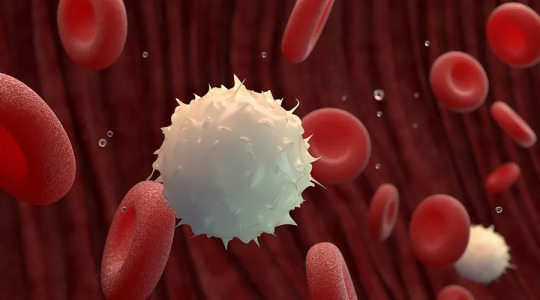
A new type of vaccine developed by researchers at the University of Chicago’s Pritzker School of Molecular Engineering (PME) has shown in the lab setting that it can completely reverse autoimmune diseases like multiple sclerosis and type 1 diabetes — all without shutting down the rest of the immune system.
4. Paris 2024 Olympics makes history with unprecedented full gender parity

In a historic move, the International Olympic Committee (IOC) has distributed equal quotas for female and male athletes for the upcoming Olympic Games in Paris 2024. It is the first time The Olympics will have full gender parity and is a significant milestone in the pursuit of equal representation and opportunities for women in sports.
Biased media coverage lead girls and boys to abandon sports.
5. Restored coral reefs can grow as fast as healthy reefs in just 4 years, new research shows
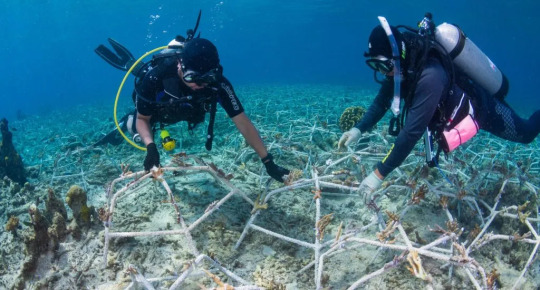
Planting new coral in degraded reefs can lead to rapid recovery – with restored reefs growing as fast as healthy reefs after just four years. Researchers studied these reefs to assess whether coral restoration can bring back the important ecosystem functions of a healthy reef.
“The speed of recovery we saw is incredible,” said lead author Dr Ines Lange, from the University of Exeter.
6. EU regulators pass the planet's first sweeping AI regulations
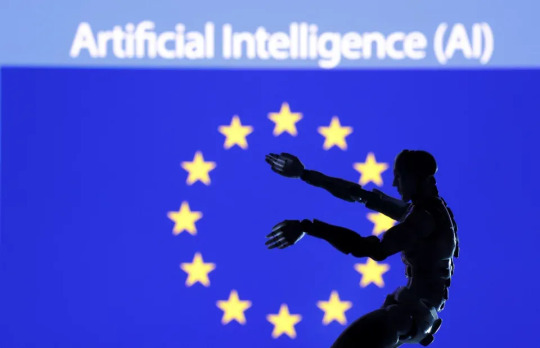
The EU is banning practices that it believes will threaten citizens' rights. "Biometric categorization systems based on sensitive characteristics" will be outlawed, as will the "untargeted scraping" of images of faces from CCTV footage and the web to create facial recognition databases.
Other applications that will be banned include social scoring; emotion recognition in schools and workplaces; and "AI that manipulates human behavior or exploits people’s vulnerabilities."
7. Global child deaths reach historic low in 2022 – UN report
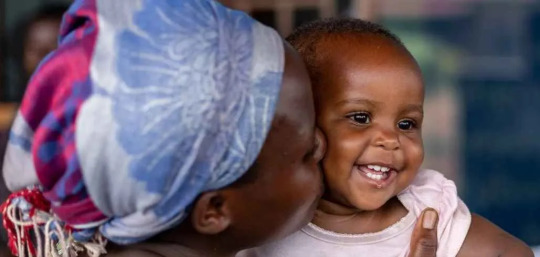
The number of children who died before their fifth birthday has reached a historic low, dropping to 4.9 million in 2022.
The report reveals that more children are surviving today than ever before, with the global under-5 mortality rate declining by 51 per cent since 2000.
---
That's it for this week :)
This newsletter will always be free. If you liked this post you can support me with a small kofi donation here:
Buy me a coffee ❤️
Also don’t forget to reblog this post with your friends.
782 notes
·
View notes